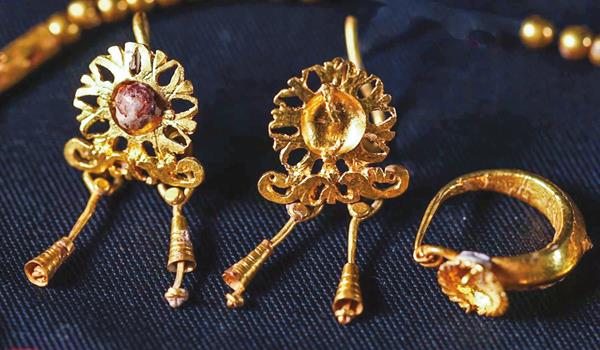
Nearly 2,000 years ago, a young girl was laid to rest in a tomb on Jerusalem’s Mt. Scopus. She was buried inside a lead coffin with a trove of gold jewelry, which archaeologists with the Israel Antiquities Authority (IAA) are just beginning to investigate.
Among the items found within the girl’s coffin were golden earrings, a hairpin, gold, carnelian, and glass beads, and a gold chain bearing a lunula pendant named after the Roman moon goddess Luna. The burial dates to the later part of the Roman period when, following the Roman destruction of Jerusalem in 70 CE, the city was rebuilt and renamed Aelia Capitolina. During this period, people from all over the Roman Empire came to settle in the city. They brought with them new cultures, traditions, and religions, including the popular cult of the goddess Luna.
The valuable lunula pendant likely served as a protective talisman during the girl’s lifetime and was included with her burial to protect her in the afterlife as well.
Although the young girl’s tomb was discovered more than 50 years ago, its contents went unstudied and unpublished following the death of the original excavator—a common problem within archaeology. To address the issue, the IAA launched its Publication of Past Excavations Project. Through the project, unpublished excavations are being reexamined and made available to scholars and the public.
Already a library member? Log in here.
Institution user? Log in with your IP address.

